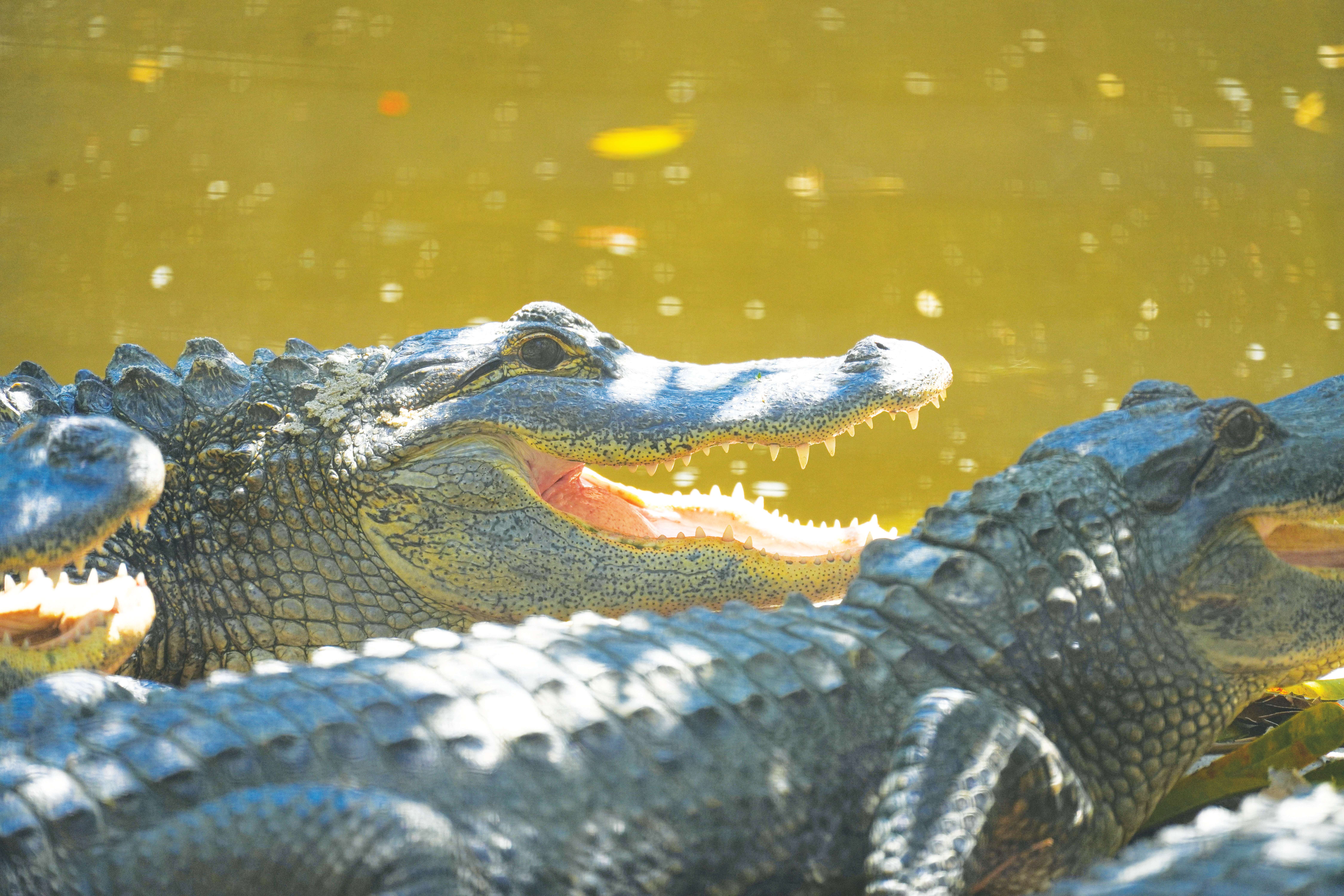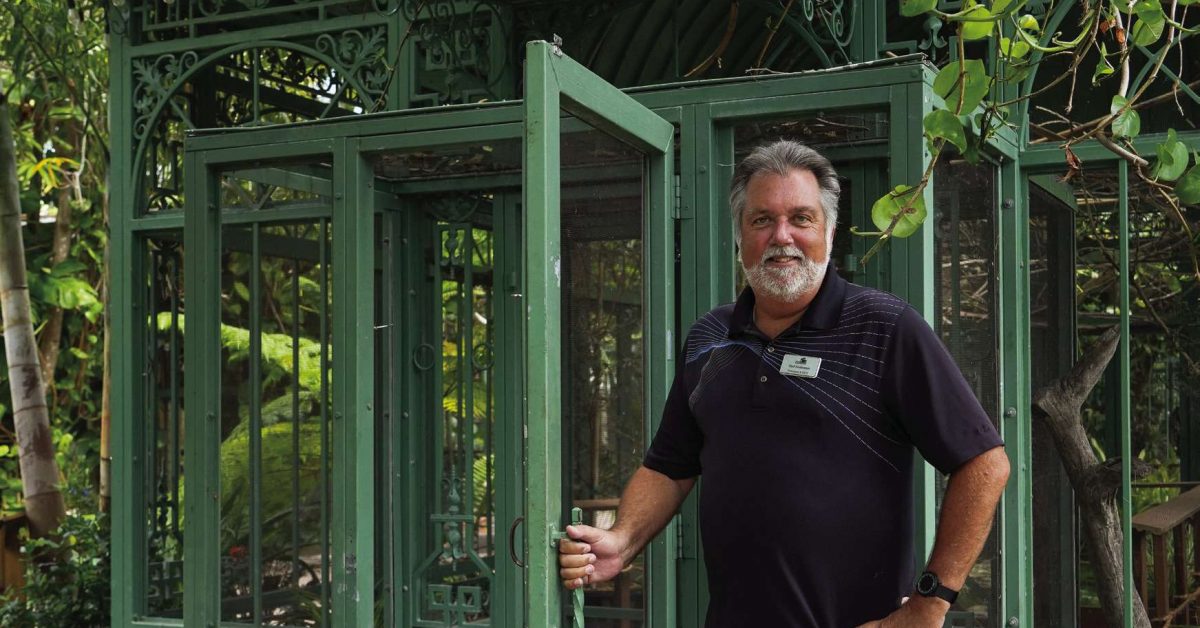When Hurricane Ian savaged Wonder Gardens, the roadside attraction that has stood for nearly nine decades along Old U.S. 41, volunteers from as far away as the state of Washington showed up to help clear the debris and repair the buildings. That’s how beloved the 3-plus acre zoo and botanical gardens in Bonita Springs is.
Families have photos of successive generations standing alongside the familiar signs with chunky ombré orange letters announcing its name. Wonder Gardens draws between 70,000 and 80,000 visitors a year, many of them members who love to stroll its shady paths and enjoy its animals.
Through the decades, its parking lot has held cars from Hupmobiles to Hummers. It weathered Southwest Florida hurricanes before they had names, long before the new millennium unleashed the Fearsome Five—Donna, Charley, Wilma, Irma, Ian.
 Now Wonder Gardens is on the threshold of its next nine decades of intriguing Florida visitors, with a $10 million, 10-year upgrade in the works that includes:
Now Wonder Gardens is on the threshold of its next nine decades of intriguing Florida visitors, with a $10 million, 10-year upgrade in the works that includes:
• Environmental aesthetics for its animal homes with disappearing screens and more habitat landscaping, as well as some visitor aesthetics with a signage refresh
• Its own animal care center, a new building that will largely eliminate having to transport animals to veterinary facilities
• A shaded “canopy experience,” a boardwalk that gradually ascends 20 feet to a banyan treehouse surveying the grounds
• An events hall that can seat 100, with prep kitchen and storage space, and featuring a panoramic view of the Imperial River, with a deck and the potential for kayak or canoe outings
• A visible kitchen with menu board that lets visitors see what the animals dine on daily, with such “dishes” as its Happy Hopper Mix for some of its four-legged residents
• Two separate glass-walled pond exhibits where visitors can watch river otters cavort underwater or learn just how alligators swim with those dinky legs
• A more complete museum, moving its natural history artifacts and memorabilia into the vintage Bonita home on the property known as “Grandma’s House,” and giving it an Old Florida touch—two porches with rockers
• An education center and a play and discovery zone for kids
• Environmental lighting for evening events
• Additional parking across Baxter Street
 Growing new, staying old
Growing new, staying old
All of this has a critical overlay: to keep the Wonder Gardens environment as Old Florida, maintaining the same roadside charm it was born with as Reptile Gardens in 1936.
“It’s the Old Florida feel, but you don’t feel ‘old and rundown,’” explained Executive Director Neil Anderson.
New building design will reflect that sensitivity. Such historic staples as its popular Flamingo Pool will stay. So will the open-air wroughtiron tea house that is popular for parties and bridal shows and its companion tea house bird environments.
The botanical gardens, an important part of the experience, will get attention with a dedicated nursery and signage. Wonder Gardens has a good catalog of Florida fruit trees and is rich with bromeliads, native specimens and a nascent orchid garden.
The result will still have the look and feel of that “oasis on Old 41,” as Anderson put it, but with amenities for today’s visitor.
“We said, ‘Let’s do this. Let’s renew the wonder,’” he said. “We wanted to keep that Old Florida, historic feel, because this is what that is, it’s what everyone feels and it’s why they come back.”
To create that, Anderson brought in the consultants he had engaged as director of a zoo in Green Bay, Wisconsin, to help grow that place from a roadside attraction to regional destination. He is also working with the Bonita Springs Parks and Recreation Department. The city owns the property, and it recently signed a 10-year lease with Wonder Gardens that assures its future there. The two are announcing a public-private partnership.
 A legacy of love
A legacy of love
There is a capital campaign underway now, with the river otter exhibit, the dream of Anderson’s predecessor, and the animal care center first on the list. The entire master plan has been in discussion for approaching three years. But Hurricane Ian changed plans here, as it did over all Southwest Florida.
Anderson had only been at the gardens six weeks when Ian tore into it.
“The worst damage was the water damage from the Imperial River. We had over 3.5 feet of storm surge. This went through the entire gardens,” he said.
He remembered leaning against a building pillar and thinking, “What have I gotten myself into?”
“It was like an explosion,” he said. “Where do you begin?”
One high priority was preserving the fauna. “We had all the animals in secure places,” he said, but that did not mean they were in particularly elegant quarters. Some animals found themselves in staff bathrooms. Anderson remembers the official who took the flamingos home.
“She got some really great reactions from people who saw her with these flamingos looking out from the back seats,” he said.
The parrots were housed in the gift shop. They were on higher ground and had food and water, and the building was boarded up for storm protection.
“It was dark in there,” Anderson recalled. “So when we opened up the doors, that’s all you could hear—the parrots yelling, ‘Hello! Hello!’” It was a light moment in an otherwise grueling mission. Anderson estimated the flooding and the wind had left the gardens under about a third of a football field’s worth of debris. But within the next three weeks, some 180 volunteers came, putting in 800 hours of work to get Wonder Gardens reopened to the public three weeks after the hurricane. It gave Anderson a deep perspective on how important Wonder Gardens is to both its visitors and the people of Bonita.
He remembered the first day when volunteers were allowed in. It was all manual labor: They dragged out the trash that had floated in, fallen branches and ruined equipment.
At about noon a couple pulled up with a carful of roast chickens and trimmings for the workers.
Asked how they had fared, the couple said they had lost their entire home, Anderson learned.
“All they had left was their vehicle. But they wanted to do something,” he said.
This story was published in The Naples Press on May 10.





